King Arthur: Knight’s Tale Early Access Preview
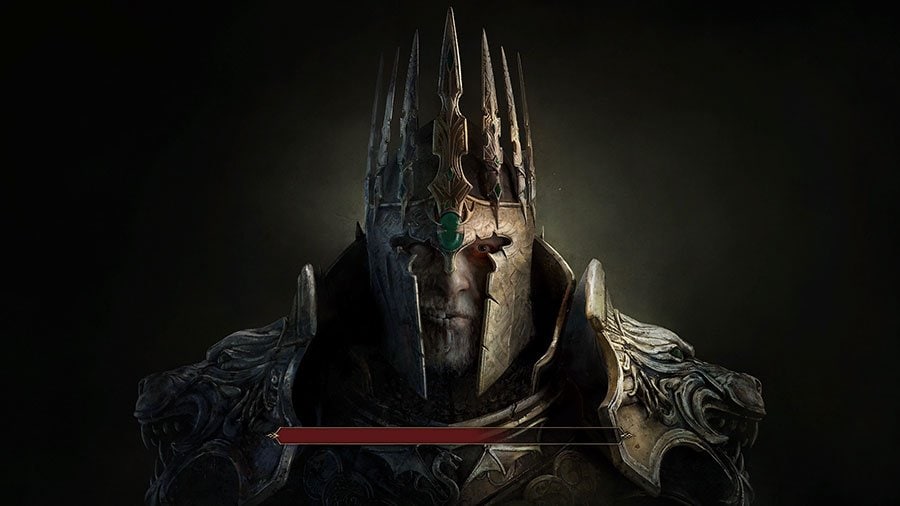
Following a hugely successful Kickstarter project, the development team at Neocore Games looks to bring a dark and gritty take on Arthurian legend into the gaming space with the Early Access release of King Arthur: Knight’s Tale. Early Access games are often hit and miss; unfinished, poorly polished, barely functioning – it’s always a gamble. However, King Arthur: Knight’s Tale not only delivers a technically impressive experience, but brings to light one of the most exciting projects to come from Kickstarter in ages.
King Arthur: Knight’s Tale Early Access Preview
[line style=’solid’ top=’10’ bottom=’10’ width=’100%’ height=’1′ color=’blue’]King Arthur: Knight’s Tale begins with a fantastic opening cinematic, setting the tone for the adventure ahead. After an epic battle, Sir Modred has slain King Arthur. However, with his final breath, the King cut down his foe in response. Both are killed, but neither are truly dead as the Lady of the Lake brings Sir Mordred back to life and sets him on a path to confront his nemesis King Arthur once again. The game only features two main story mission at the moment, but there’s plenty of side content to make it worth exploring.
Aside from the two main story locations, the current version of Early Access includes seven optional missions, several characters from multiple classes, the ability for heroes to reach level five, and the basics of Camelot upgrades. While somewhat slim in content, there is plenty to get excited about. From the gorgeous environments and challenging tactical combat to the careful management of a kingdom, King Arthur: Knight’s Tale shows a hell of a lot of promise.
At its core, King Arthur: Knight’s Tale is an isometric-styled turn-based RPG with a heavy focus on character development and progression. It features many of the staple elements of the genre, from the thrilling battles to the constant desire to loot, loot, loot.
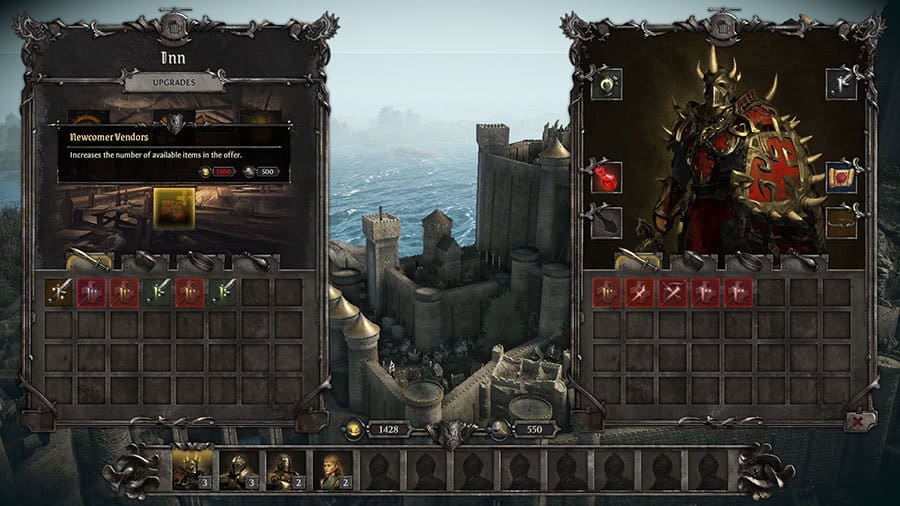
The current looting system is a bit hit and miss. You don’t loot enemies after combat, leaving the tail end of battles feeling lackluster and unrewarding. There are also a couple of challenging combat sequences that promise great treasures, but it’s difficult to understand what the actual reward is.
I’m unsure if I was rewarded a lot of my efforts, because the game doesn’t allow you to view or equip any new items until post-mission. So while I’m sure you get loot for many of these seemingly loot-less tasks, it’s unclear on whether or not they are worth doing. Some may prefer this approach, removing the need to constantly loot fallen foes, but without some notification or information on rewards, it does feel a little lackluster. Other areas of reward do feature at least some level of on-screen notification, so hopefully this spreads to all manner of loot gathering.
While the action of actually obtaining loot still needs some work, the actual physical loot you receive is exciting and rewarding, right from the start. You don’t loot weapons or armor, but runes instead. For all intents and purposes they all act identical, with weapon runes increasing your damaging stats, armor runes your defensive stats, and so forth. However, they do not change or alter the appearance of characters at all – at least not yet. While missing new visuals for new equipment is a bit of a downer, the potential for character builds benefits hugely, offering many different paths of each of the knights by your side. The perks of not having to provide new models for each and every item is variety. There’s already a ton of selection in-game, and while it may disappoint visually, I’m really excited to see what kind of knights I can build come release.
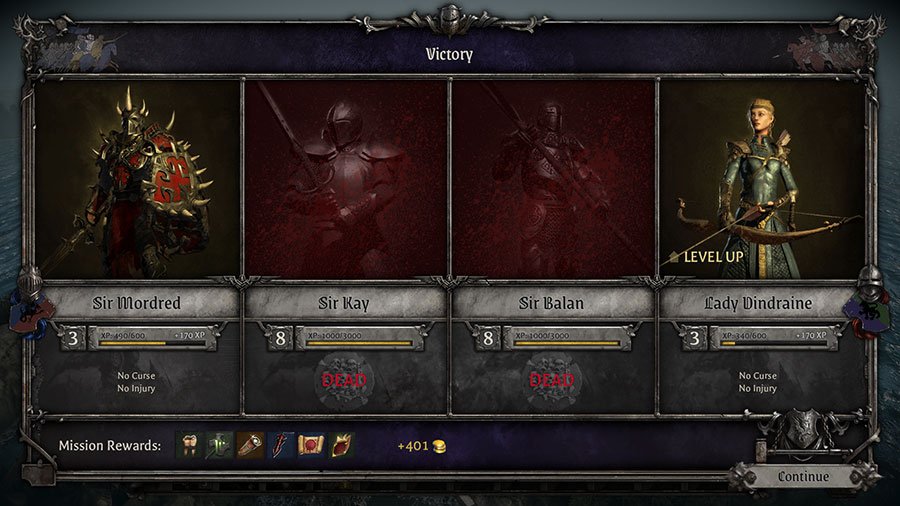
Arguably the most important aspect of the game, even at this early stage of development, is the combat. If this foundation isn’t solid, no amount of updates and patches will fix it. However, that is not a problem that King Arthur: Knight’s Tale has to face. The combat is fantastic; it’s turn-based, grid-style combat where you select your characters, spend Action Points to move and attack, and keep a careful eye on positioning to avoid flanking attacks – or landing that brutal killing blow from behind.
Both positioning and turn order are vital. Shielded characters can block heavy damage from the front, but if they are attacked from the rear, the heavy defense provided by a shielded front line becomes useless. Overwatch, an ability that lets your knights prepare for an attack should an enemy come in range, is incredibly satisfyingly and rewarding when executed properly. One can watch a squad of enemy infantry marching on your front line, each unsuspecting the ambush that lays ahead. With a couple of shots from your archer to weaken them down and heavy hits from your two-handed specialists as they approach, they are decimated. Even in its earliest stage, the combat in King Arthur: Knight’s Tale is tactical, strategic, and a hell of a lot of fun.
The mission-based content, recruiting of new characters, and character development would settle as enough of the game to make it worth the purchase, but there’s a lot additional depth outside of the core fundamentals. Camelot can be upgraded and improved, adding vital facilities for you and your knights. You can heal permanent wounds, train items, and recover your injured knights. The current Early Access build only features three buildings, but it’s already a very interesting feature, one that plays a vital role in your success.
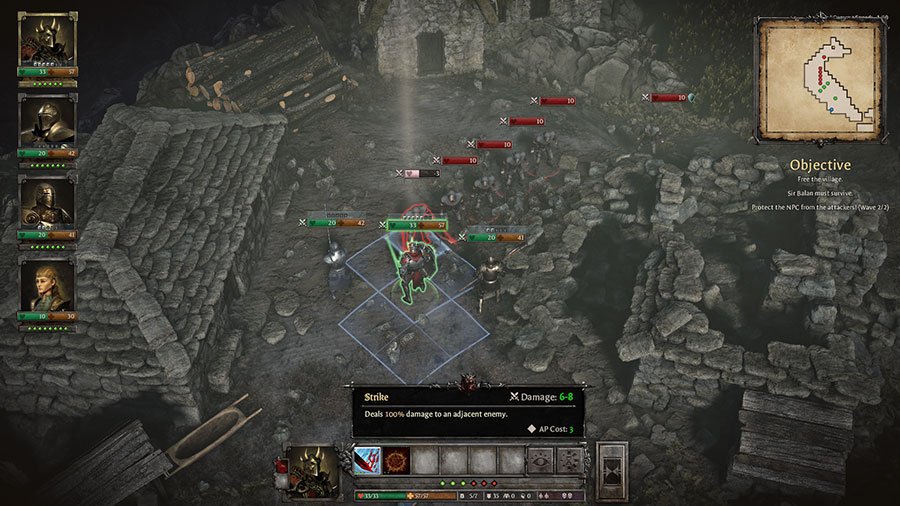
Adding further depth is a Morality system, albeit one that doesn’t feature too heavily at the moment. From the very beginning, Sir Mordred is faced with certain choices. Does he take the throne of Camelot for himself, or defend it in the name of the Lady of the Lake? Does he recruit the surviving bandits after a raid, or send them into exile? Each choice contributes towards the Morality system. Will you bring Camelot back from the ashes as a righteous ruler, or command it under fist as a tyrannical leader?
There are a number of areas with King Arthur: Knight’s Tale that hit me in ways I never expected. During my first playthrough, I ran into several unexpected design decisions that really threw me off. I had conquered the first story mission, escaped the dungeon of Camelot, and claimed the throne. I’d liberated a nearby village from a horde of bandits and put the citizens to work on upgrading Camelot. Unfazed by the challenges I’d faced thus far, the knights and I took to our next conquest: a brigand-filled forest.
Long story short, things went a little south for the knights and I. By the end of the mission, I was left with just Sir Mordred and Lady Dindraine, a dangerously impressive archer. That was it. I had yet to build my Hospice in Camelot, so I was unable to heal my fallen comrades. You are unable to repeat missions or revisit past locations. And the next areas available to me were an impossible task with just two knights. So, on my next mission, failure was inevitable. I died. Game over. I was unable to reload, as there’s no manual saving. There was just the haunted presence of the save file in my load screen, unable to load.
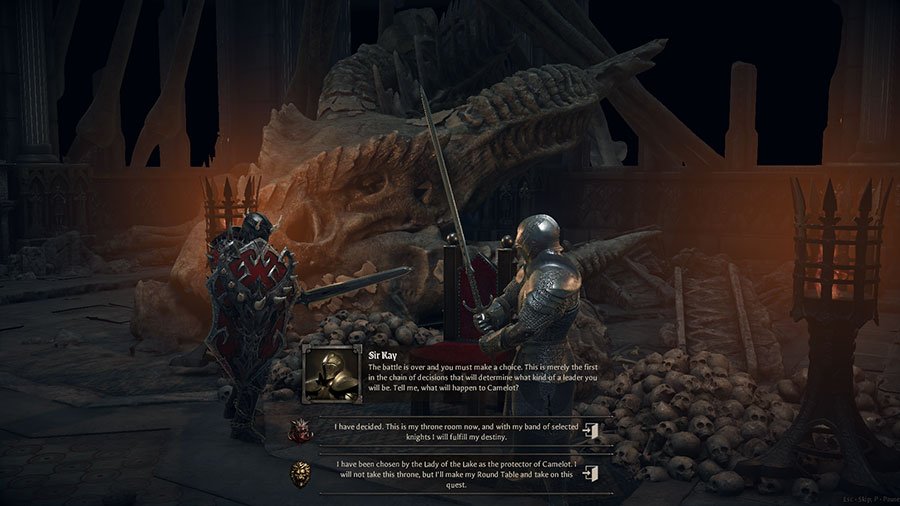
Although I was not expecting this level of brutality, I thoroughly welcomed the almost roguelite-esque aspects of design. Whether these features exist by intention I’m unsure, but I am very interested to see what route the game takes as it continues to develop. I’m especially a fan of removing the save-scumming crutch that so many of us love to use – myself included.
For a game in its earliest infancy of Early Access, I was hugely impressed with King Arthur: Knight’s Tale. Technically, the game is near flawless. I was unable to loot items on one playthrough, a few of the skills didn’t functional correctly, and dialogue sometimes failed to play correctly. Despite this, reloading fixed most of these problems immediately and I suffered no other issues.
We’re not spoiled for choice when it comes to exploring stories of Arthurian legend, but King Arthur: Knight’s Tale is already preparing to be one of the most exciting games of the year.
[blogger ids=” cat=’game-previews’ orderby=’date’ order=’desc’ count=’4′ descr=’200′ readmore=’1′ rating=’1′ style=’image_large’ border=’0′ dir=’vertical’]